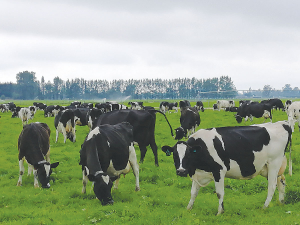Ensuring your cows have the best mating this season
Hit the ground running this mating with these foundations for success.
 Sexed semen with genomic testing now gives farmers control over which females contribute to our future herd.
Sexed semen with genomic testing now gives farmers control over which females contribute to our future herd.
For the longest time, sexed semen was talked about, but not really implemented in mainstream dairy farms. This is rapidly changing.
Artificial breeding allowed us to choose which males created offspring. Sexed semen with genomic testing now gives us control over which females contribute to our future herd. It’s a truly powerful combination.
The ability to quickly create more efficient, profitable cows from your top performers means that it’s an exciting time to be farming. You have far more control in matching market demand to future herd genetics, in a way that optimises your future operation.
With all the pressures coming onto farm production, why wouldn’t we want the best possible animals in our future herd, as quickly as possible?
Industry and technology changes
Things happen gradually, then suddenly. In the 20 years that sexed semen has been available, understanding of reproductive science across the industry has come a long way. Many small steps have been taken.
More farms have the fundamentals under control and are running a tight ship. At the same time, emerging opportunities and pressures to farm more profitably have helped create the environment for greater uptake of sexed semen.
More specifically, nutrition and management has improved steadily. Close scrutiny of health and fertility going into repro has become standard. Reproduction programmes have become better measured and improvement made.
Reported conception rates of sexed semen have also improved, tipping the scales further.
While sexed semen does cost you more per straw, the investment is increasingly justified for more and more farms.
Heat detection matters
Timing matters. Inseminating a cow when she isn’t in heat is a total waste of a straw. Mistakenly inseminating pregnant cows later in mating can put pregnancies at risk. Farmers have been rightly wary to use higher value straws where heat detection has been a bit marginal; they know there’s longer odds of a payoff.
Breeding at the optimal time is the pinnacle of your whole repro effort, reflected in your conception rate. Even if you’ve done absolutely everything else right, you must accurately call heats to maintain higher conception rates. This is especially important where efficacy of the sexed product still sits lower than standard product.
Genetic gain and more optimal use of beef straws
With sexed semen creating better replacements more efficiently, capacity becomes available for increased use of beef genetics. This can reduce costs of repro and increase value of progeny. Farmers are accessing benefits from short gestation (increased days in milk), greater calving ease and higher growth rates with traits that processors can pay more for over time. It’s really not as simple as just choosing the lowest price straws for breeding.
Avoid overspending
Beyond the initial cost of the straws, overuse of sexed semen beyond your elite group produces lower merit females that you don’t need as replacements, while costing the opportunity to use beef genetics potentially.
Nine months after overspending on sexed semen, you may then face additional costs with feed, labour and facilities. Overcrowding carries additional health risks. You will also want to avoid culling productive older cows in favour of first-lactation cows that are still growing, by better matching replacements to your ideal cull rate. Getting the use of sexed semen right will help you achieve those goals. Getting it wrong will only cost you money.
Putting it all together
With the fundamentals under control, sexed semen is a powerful tool for improving your herd and optimising profitability.
Pairing low-cost accurate heat detection with sexed semen means you can invest with confidence. For a fraction of the price of a straw, accurate and clinically-proven electronic heat detection is available that pinpoints optimal timing of heat without having to train staff in new systems and software.
Because return heats are also covered, these are a similar outlay to patches and become cheaper over longer mating programmes.
Changes in reproductive technologies can seem overwhelming. Do your homework and get to grips with how they can help. Be clear on your goals before you go `all in’ and run up excess costs.
It’s understandable why uptake of sexed semen is currently strong. Setting excitement aside; with thorough evaluation of proof, you can work with your advisors to make sound investments that help deliver the results that you’re after.
Article supplied by Farm Shed Labs.
One person intimately involved in the new legislation to replace the Resource Management Act (RMA) is the outgoing chief executive of the Ministry for the Environment, James Palmer, who's also worked in local government.
Horticulture New Zealand (HortNZ) says a new report projects strong export growth for New Zealand's horticulture sector highlights the industry's increasing contribution to the national economy.
Fonterra shareholders say they will be keeping an eye on their co-operative's performance after the sale of its consumer businesses.
T&G Global says its 2025 New Zealand apple season has delivered higher returns for growers, reflecting strong global consumer demand and pricing across its Envy and Jazz apple brands.
New Zealand's primary sector is set to reach a record $62 billion in food and fibre exports next year.
A new levying body, currently with the working title of NZWool, has been proposed to secure the future of New Zealand's strong wool sector.
President Donald Trump’s decision to impose tariffs on imports into the US is doing good things for global trade, according…
Seen a giant cheese roll rolling along Southland’s roads?